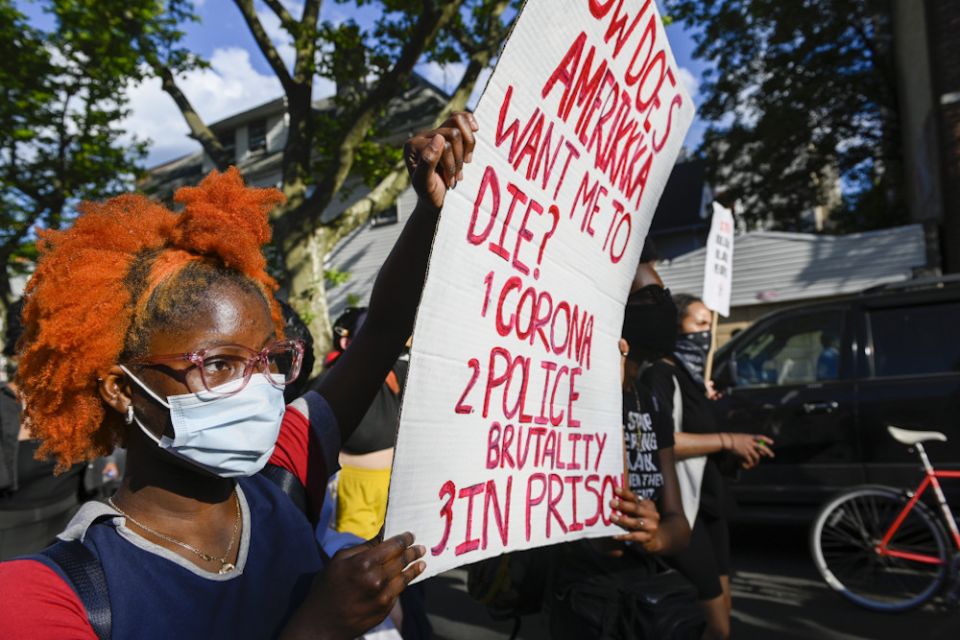Let’s have a REAL conversation about taking responsibility for Why White Privilege starts with entitlement, called the “White Man’s Burden”. We may not solve anything but, we have to try? https://t.co/r8Ujw1bIhW pic.twitter.com/R1bixIQot1
— Kevin Clark (@Homageusa) June 11, 2020
Are there any White people willing to tell me how they process the established fact that White Privilege is real, and isn’t going anywhere soon. With Georg Floyd, and a rash of other police related deaths we can understand how the use of privilege combined with power of the badge can overwhelm any event at anytime, but how do citizens who are not police hold their views and apply them on demand? Is it manifest destiny, or something else that non-white people can glean some understanding of where White people feel empowered and justified.
“Every white person in this country — I do not care what he says or what she says — knows one thing. … They know that they would not like to be black here. If they know that, they know everything they need to know. And whatever else they may say is a lie.” — James Baldwin, “Speech at the University of California Berkeley,” 1979. It has never been easy to be black in America. Still, the past few months have pushed me to depths of outrage, pain and despondency that are unmatched in my 63 years of life. Look at what has transpired:
The COVID-19 pandemic showed that while all might be vulnerable, we are not equally vulnerable. Blacks, Latinos and Native peoples are the vast majority of those infected and killed by this virus. In some places, the levels of “disparity” (such a sanitizing word!) are catastrophic. But as tragic as this is, it was entirely predictable and even expected. The contributing factors for this vulnerability have been documented for decades: lack of insurance, less access to healthcare, negligent treatment from and by healthcare professionals, overcrowded housing, unsafe and unsanitary working conditions. All of this compounded by how the least paid and protected workers are now considered “essential” and must be exposed to the virus’ hazards. As a young black grocery clerk told me, “Essential is just a nice word for sacrificial.” Sacrificed for the comfort of those who can isolate and work from home, who are disproportionately white.
Breonna Taylor, a 26-year-old African American woman, who was killed by Louisville police officers on March 13 after they kicked in the door of her apartment unannounced and without identifying themselves. Fearful for their lives, her boyfriend fired his lawfully possessed gun. Breonna was killed with eight bullets fired by three officers, under circumstances that have yet to be satisfactorily explained.
Christian Cooper, a young black man — a birdwatcher — who was reported to the police May 25 by Amy Cooper (no relation), a young white woman, who called 911 to say that “an African American man” was threatening her in New York’s Central Park merely because he had the gall to ask her to comply with the park’s posted regulations to leash her dog.
Ahmaud Arbery, an unarmed 25-year-old black man, who was executed on Feb. 23 as three white men stalked him while he was jogging in Brunswick, Georgia. One of the killers had ties to local law enforcement. Only after public protests and the passing of 74 days were any arrests made and charges filed over this death. With their hearing in the rear view mirror, we’ll see what kind of jury is assembled, and what happens in a county where it will be hard-pressed to convict with deep-rooted entitlements.
The COVID-19 pandemic showed that while all might be vulnerable, we are not equally vulnerable. Blacks, Latinos and Native peoples are the vast majority of those infected and killed by this virus. In some places, the levels of “disparity” (such a sanitizing word!) are catastrophic. But as tragic as this is, it was entirely predictable and even expected. The contributing factors for this vulnerability have been documented for decades: lack of insurance, less access to healthcare, negligent treatment from and by healthcare professionals, overcrowded housing, unsafe and unsanitary working conditions. All of this compounded by how the least paid and protected workers are now considered “essential” and must be exposed to the virus’ hazards. As a young black grocery clerk told me, “Essential is just a nice word for sacrificial.” Sacrificed for the comfort of those who can isolate and work from home, who are disproportionately white.
George Floyd, an unarmed 46-year-old African American man, who was brutally killed on May 25 in Minneapolis by a white police officer who knelt on his neck for 8 minutes and 46 seconds, despite being restrained, despite the urgent requests of onlookers, despite his repeated desperate pleas: “I can’t breathe” ignited a flame that was already smoldering. This episode is a tipping point in how visual media has driven historical outrage from many who have never been motivated to speak and loudly about change, but what change will be the outcome?
Omar Jimenez, a black Latino CNN reporter, who was arrested on May 29 in the middle of doing live reports on events in Minneapolis, while a white CNN reporter doing the same thing, at the same time in the same neighborhood, was not only not arrested but was treated with “consummate politeness” by the authorities. The stark contrast was so jarring that Jimenez’s white colleagues noted that the only possible difference was the race of the reporters.

